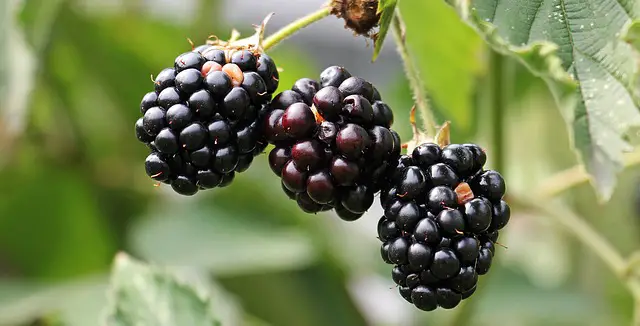
It would be amazing if my homegrown blackberries were always as perfect as those at the farmer’s market – plump, deep black, juicy, and gigantic. But in reality, even experienced growers have to put up with some less-than-ideal-looking fruit.
The blackberry problem I encounter most often is little white spots on some of the fruit. It turns out this issue is probably not due to any insect or disease and doesn’t actually damage my plant. But what exactly are the white spots that appear on blackberries?
The main cause for white spots on blackberries is White Drupelet Syndrome, which occurs when berries are exposed to excessive UV radiation in hot, dry weather. Sunburn can also cause exposed portions of berries to be pale or shriveled. Stink bug damage appears as individual tan or brown drupelets.
Thankfully, the white spots on my blackberries don’t really affect my enjoyment of the fruit. But I still like to do what I can to grow the best fruit possible in my garden. In this article, we’ll look at why White Drupelet Syndrome happens, how to prevent it, and other possible reasons for discolored blackberries.
What is White Drupelet Syndrome?
How it Happens
If you notice pale, whitish drupelets on your blackberries, either single or in clusters, it’s probably due to White Drupelet Syndrome (or Disorder). This is called an “abiotic disorder” because it isn’t due to any insect pests or disease pathogens. White Drupelet Syndrome (WDS) is caused by the weather.
Quickly rising temperatures accompanied by a drop in humidity create the perfect conditions for WDS, especially if it’s also windy. It isn’t actually the heat that causes the problems – it’s the UV rays.
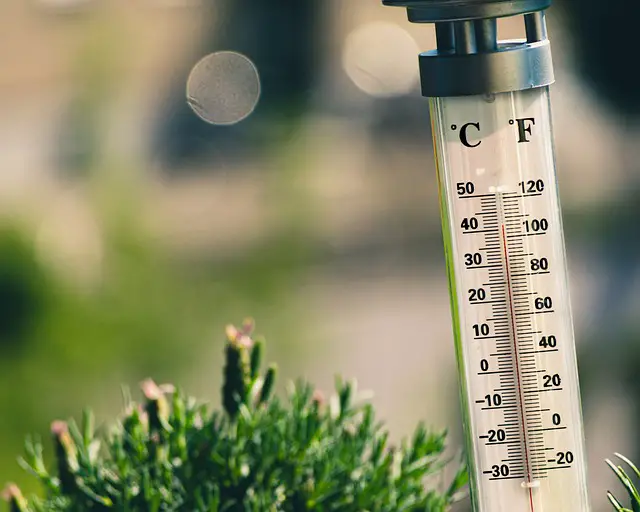
Hot, dry air allows more UV rays to reach the fruit, even through the shady canopy. Cooler, damp air scatters the harmful UV rays, minimizing damage to the berries. The drop in humidity and increase in heat allows more radiation to reach the fruit, whether or not it’s exposed to direct sun.
What it Looks Like
With White Drupelet Syndrome, individual or groupings of drupelets (the little “balls” that make up the surface of the berry) may appear white or slightly tan. Affected drupelets are usually completely plump but have never turned red or black like the rest of the fruit. You may see just one or two affected drupelets, or there may be a whole cluster of them together.
What Berries are Affected
We’re focusing on blackberries in this article, but raspberries are also affected by WDS (possibly more than blackberries). Certain blackberry cultivars seem more susceptible to the disorder, including ‘Apache’, ‘Kiowa’, and ‘Sweetie Pie’, but all varieties could be affected.
You may notice more white spots on blackberries that have higher sun exposure since they receive more UV rays than sheltered berries. Berries on the south-facing side of the plant could also be more susceptible to WDS damage.
How to Prevent White Spots on Blackberries
First of all, you may not need to do anything – when the temperatures decrease and humidity rises, the disorder will correct itself. It’s usually a problem earlier in the growing season when the plant is more tender. But, if White Drupelet Syndrome is a consistent problem every season, you may want to consider relocating your blackberry patch.
Blackberries do need full sun, especially if you want them to be as sweet as possible. But in hotter climates, it’s a good idea to plant them in a spot that receives some afternoon shade. It won’t completely eliminate WDS issues, since UV radiation can penetrate into shade. But, it could keep the temperatures somewhat moderated and minimize the white spots showing up.
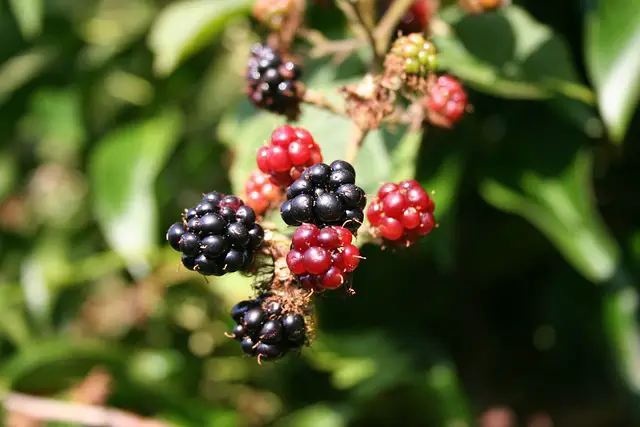
Read about how to successfully relocate established blackberry bushes in Transplanting a Mature Blackberry Bush: Tips to Do It Right.
Some commercial growers have tried using overhead irrigation during hot, dry spells to minimize fruit loss to White Drupelet Syndrome. The idea is to keep blackberry plants cooler and more humid so conditions are less friendly to WDS. The sprinkling is done early in the day so the plants have a chance to dry before nightfall.
This is not necessarily recommended for home growers, since a wet environment could cause or exacerbate many pest or disease problems. Commercial growers are incentivized to grow perfect, unblemished fruit, as anything that appears damaged is not suitable for sale. But for the home garden, a little imperfection is allowed (dare I say, even encouraged?).
One study found that shading blackberry plants by about 30% significantly reduced the occurrence of White Drupelet Syndrome. But the problem is, they also found (understandably) that the berries were less sweet since they had less sun exposure.
I, for one, would rather have the sweetest berries possible and put up with a few white spots. But, if you decide to try shading, be careful to leave plenty of room under the shade cloth for air circulation. If the cover is too close, you could accidentally be creating an even hotter, greenhouse-like environment that may make the problem even worse.
Related: Why are my Blackberries Sour? Tips to Grow Sweeter Berries
Are blackberries with white spots edible?
Blackberries affected by White Drupelet Syndrome are completely edible. There will be no off-flavors present. If desired you can remove the affected parts of the berries before eating, just to be certain the discoloration isn’t caused by something else.
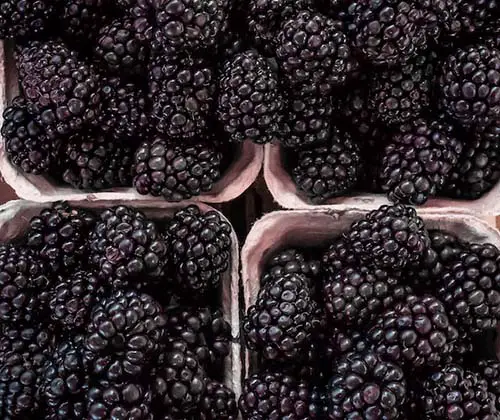
You won’t find any berries at the store or farmer’s market that have white drupelets. But, that’s really only because they know consumers won’t spend their money on less-than-perfect fruit. I know I’m guilty of this at the grocery store. But WDS won’t affect the flavor of the blackberries at all, and there’s no danger in consuming the discolored parts since there is no insect or disease cause.
Other Causes for Pale Discoloration on Blackberries
There’s no reason to be overly concerned about White Drupelet Syndrome in your backyard blackberry patch. But, there could be other causes for the berries’ pale discoloration that look similar, including sunburn, stinkbug damage, or mold.
Sunburn
Another common reason for pale patches on blackberries is sunburn. This is exactly what it sounds like – fruit exposed to strong, hot sunlight could essentially get “burned.” You’ll notice groupings of pale tan drupelets that often look “cooked” or slightly shriveled, like a raisin.
White Drupelet Syndrome and sunburn might be used interchangeably when discussing the white spots on blackberries, but their causes are slightly different (although related). Sunburn is more due to the temperature rather than specifically UV rays. But, regardless of what you call it, they do look similar.
The biggest difference is that sunburn will only affect berries that are directly in the sun, whereas WDS could penetrate through the canopy of the plant. With sunburn, you’re likely to notice several pale drupelets on one side of the berry, but WDS may only cause single or scattered white drupelets. Just like with WDS, the sunburned berries are still edible, although they may taste slightly over-ripe.
Stinkbugs
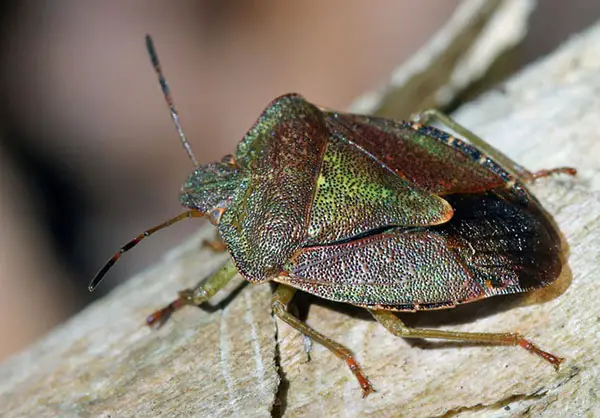
Stinkbugs are the culprit most often blamed for the white spots on blackberries. They love blackberries just as much as we do – but it’s not the juicy, black outside they want. Stinkbugs eat the white receptacle in the middle, whether the berry is green, red, or fully black.
It’s true, stinkbugs can damage blackberries as they feed, but the affected drupelets tend to look more tan or brown and shriveled. You’ll typically only see one or two individual discolored drupelets due to stinkbug damage. The berries themselves are unaffected and still edible.
One important caveat though – when stinkbugs are startled or defensive, they can release their characteristic “stink” on your blackberry! You will never forget eating a blackberry that tastes just like a stinkbug smells. It doesn’t happen too often, but…just a friendly word of warning.
Mold
Finally, you may be wondering if the white spots on your blackberries could be mold. The good news is, mold looks very different than white-colored drupelets. Mold on berries is typically pale (although the color varies) and very fuzzy-looking.
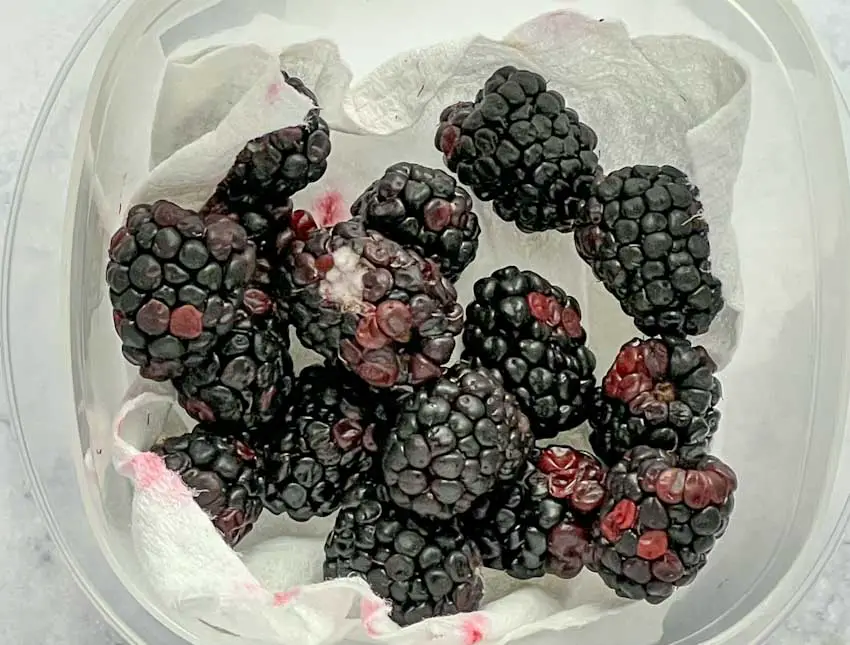
Mold usually appears when the blackberries are exposed to cool, wet conditions, such as what they find in a refrigerator. This is why it’s recommended to never wash your berries before you store them in the fridge, as the mold will grow very quickly on damp berries. Instead, wash them just before you’re ready to eat.

